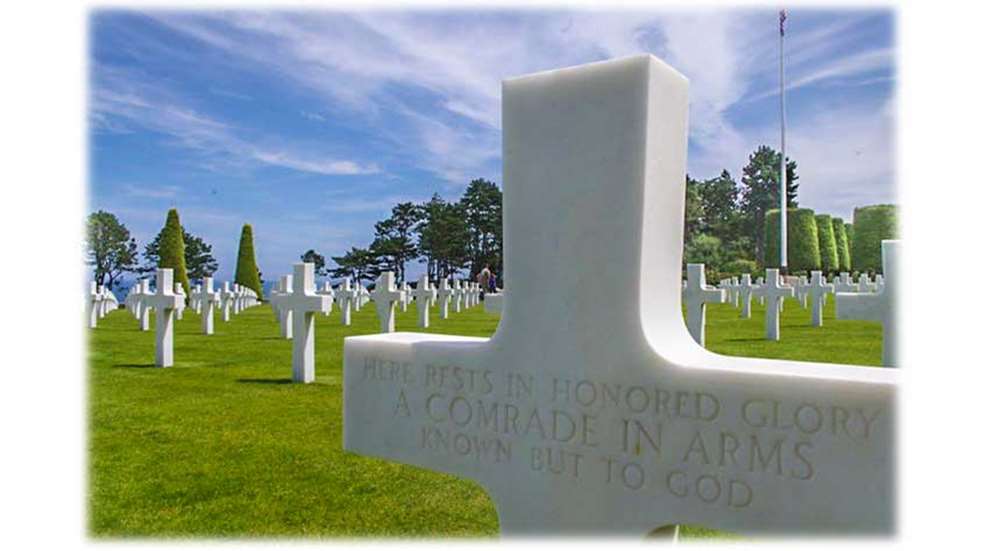
Memorial Day is one federally recognized holiday with origins shrouded in mystery and a purpose that still is not widely recognized by many in the United States. Like other holidays and ceremonies today, the modern American practice of acknowledging those who died in conflict stems largely from our country’s devastating experience in the Civil War. Though no accurate number exists, it is suspected that the war was responsible for as many as 800,000 deaths resulting from combat wounds or sickness, more deaths than were suffered in every other American war combined.
In the decades following the Civil War, veteran groups emerged. Those who were marked indelibly by their experience of the conflict sought to gain some recognition and understanding of the sacrifice and devastation wrought on countless battlefields across the American continent.
Even then, members of these organizations complained about a lack of respect shown by the younger generation. In 1913, one elderly veteran from Indiana remarked that those born since the war had a tendency to “forget the purpose of Memorial Day and make it a day for games, races and revelry instead of a day of memory and tears.”
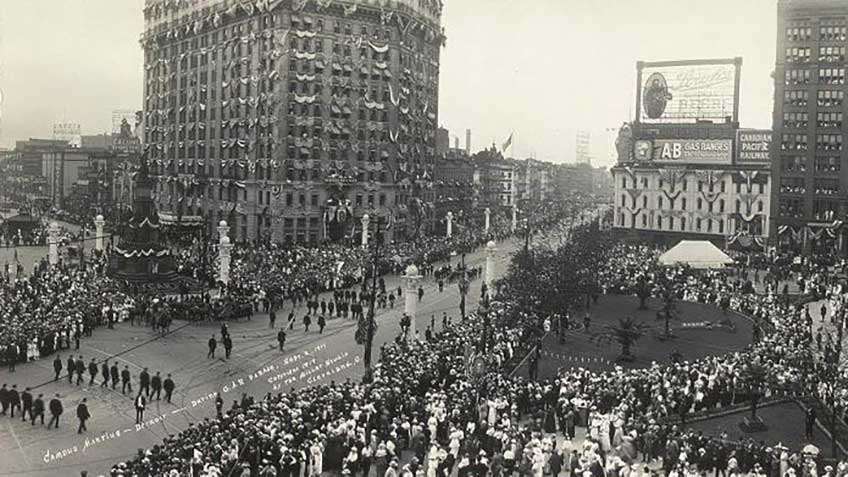
Little did that young generation know that they were on the cusp of the most murderous century in human history, a period that would transform entire landscapes, governments, civilizations and societies. The wars of the 20th century would extinguish nearly 200 million lives. This sterile, emotionless number hardly conveys the sheer devastation and loss wrought on families in every corner of the world.
The deadliest of those conflicts, World War II, claimed the lives of nearly 420,000 U.S. military service members, and it is the memories of these Soldiers, Sailors, Airmen and Marines that add potency to much of our country’s remembrance experiences of today.
Memorial Day in 2020 also touches an important milestone in relation to that conflict. This is the 75th year since the end of World War II, and it also likely marks the last major anniversary in which we can touch the living memory of those who served. Like that irritated Indiana veteran of 1913, it is indisputable that there is no stronger advocate for the remembrance of those who died than those who survived the same battles in which so many perished.
Within the American Rifleman staff, I’m one of a younger generation whose experiences and memories differ from those a generation or two removed from mine. Editor-in-Chief Mark Keefe often shares wonderful experiences from years past, when he explored the battlefields of World War II alongside the very men who liberated that land. The older staffers among us remember working alongside men who fought and sacrificed on the fields of Europe and the islands of the Pacific. After fighting for freedom overseas, those same men came home and fought for the freedom to keep and bear arms as employees of the National Rifle Association.
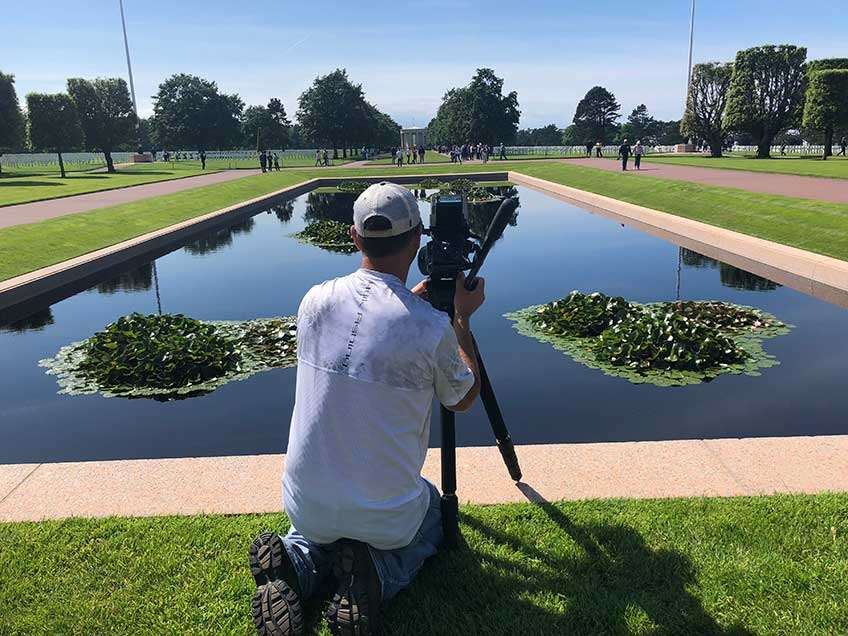
Those were the survivors, and most are no longer with us. In their early years, they left comrades buried where they fell. Many of the dead rest in cemeteries located near the shell-scarred fields and forests in which they gave their lives. The American Battle Monuments Commission (ABMC) meticulously maintains these cemeteries on ground gifted to the United States in perpetuity. The men who fell in these foreign lands will rest forever in American soil.
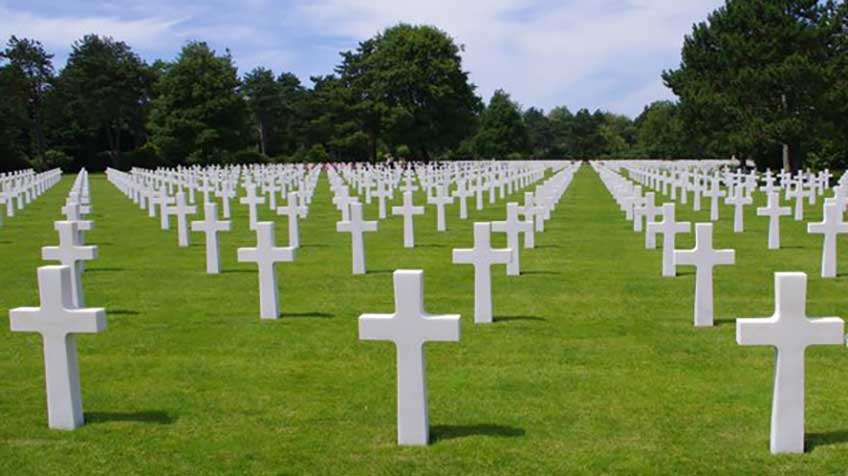
In my teens, I had the extraordinary fortune to visit one of the most famous of these cemeteries: the Normandy American Cemetery and Memorial overlooking the D-Day landing beaches along Colleville-sur-Mer. According to the ABMC, this is the most-visited of all the cemeteries maintained by the commission, with more than 1 million visitors annually. The site is the resting place of 9,388 Americans who gave their lives in the fight to free Europe.
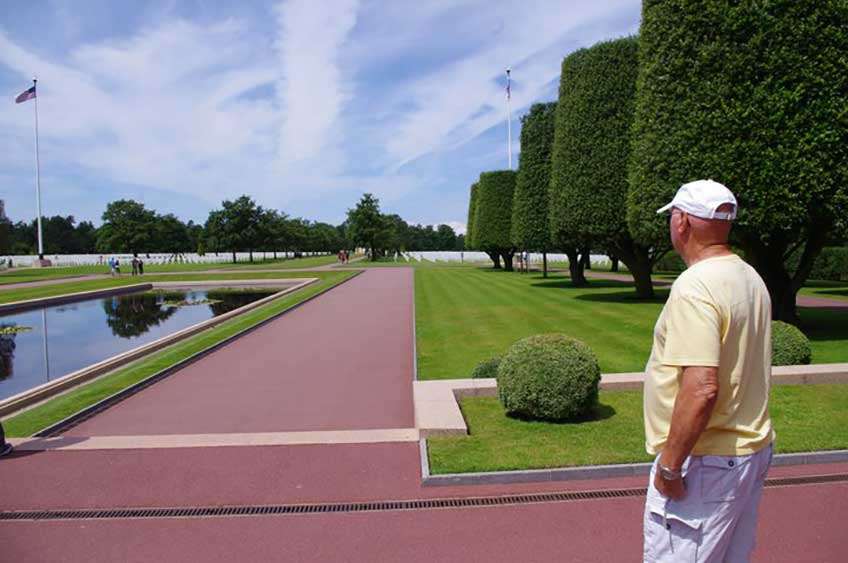
Like many who visit this hallowed ground, I wasn’t alone. On this trip, I visited with my grandfather. This shared experience differed from that of others, though, and it reflects a turning of the page in our collective history. My Grandpa Joe was too young to fight in World War II. Born in 1934 in rural Michigan, his earliest memories reflect the realities and hardships of economic depression and war.
His WWII memories consist of seeing his older brother ship out to serve as a B-24 gunner in the 15th Air Force. Growing up just outside Detroit, he heard the low rumble of Pratt & Whitney radial engines and ran out to the yard to see formations of newly built B-24 Liberators flying from Ford’s Willow Run Assembly Plant. This plant, thought to be the largest factory ever built under one roof, encompassed 3.5 million square feet and had an assembly line stretching more than a mile. At its peak, the plant turned out one B-24 Liberator every hour, an astonishing feat.
My grandpa’s brother came home, and I have faint memories of my Uncle Bud. My grandfather grew up surrounded by those who served, and he spent his life seeking a better understanding of what those men experienced in his formative years. Our visit capped a lifetime of learning for him, and it spurred a passion for military history in me.
My grandmother’s family was less fortunate. Verlin Frederick Burmis served with the 104th Infantry Division in Europe. Uncle Freddie fought in the Battle of the Bulge, crossed the Rhine, liberated Nordhausen concentration camp and fell to a German bullet in the town of Halle, Germany, on April 17, 1945, leaving behind a son who never knew his father. He is one of those nearly 420,000 American lives lost during the war.
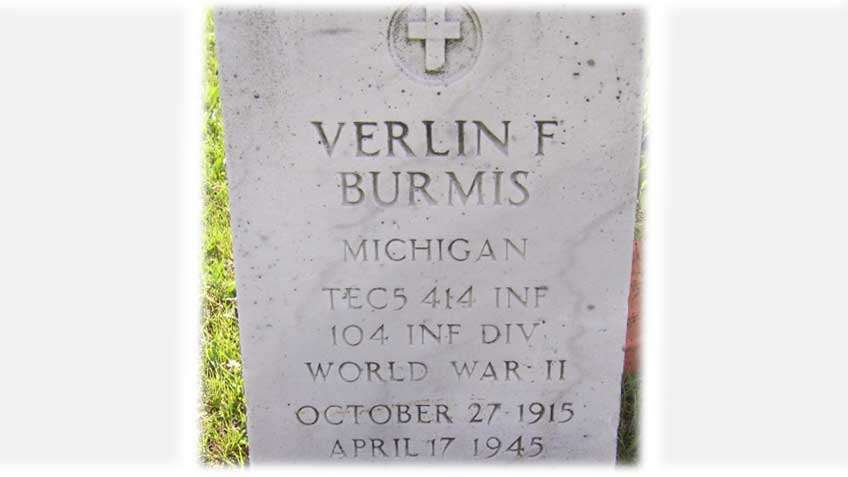
We brought Uncle Freddie home. Today, he rests alongside other members of my family, including my great-grandmother, who struggled to come to terms with the death of her brother. Growing up, our Memorial Day ritual involved placing flowers on family graves, including Uncle Freddie’s. Though I never knew the man, his sacrifice and importance to our family drove me to understand and learn more of what he experienced, where he fought and why he died.
As the generations who witnessed these selfless sacrifices fade into history, those who remain sometimes find it difficult to comprehend the full measure of that given by those who died. But even in the absence of conscious memory, those enormous sacrifices still remain and echo through the ages. In the immortal words of Joshua Lawrence Chamberlain:
“In great deeds, something abides. On great fields, something stays. Forms change and pass, bodies disappear, but spirits linger to consecrate ground for the vision-place of souls. Generations that know us not and that we know not of, heart-drawn to see where and by whom great things were suffered and done for them, shall come to this deathless field to ponder and dream; and lo! The shadow of a mighty presence shall wrap them in its bosom, and the power of the vision pass into their souls. This is the great reward of service: to live far out and on in the life of others.”
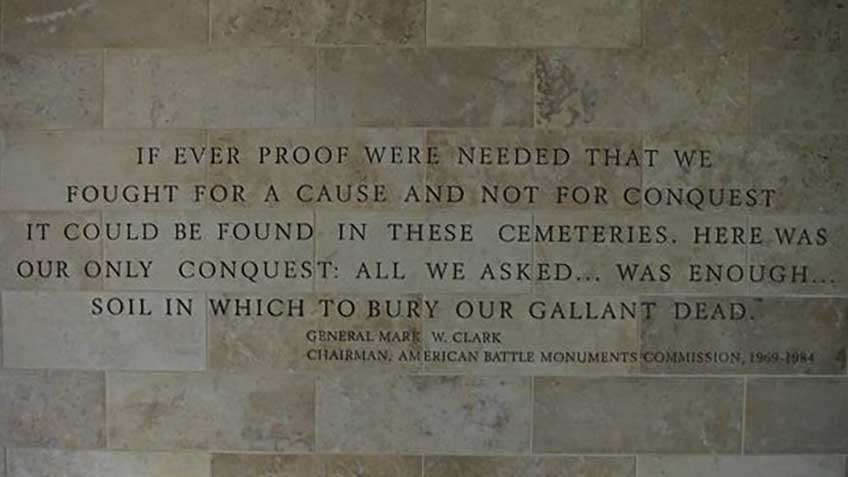
Memorial Day is marked in a variety of ways across America. Some choose to visit the burial sites of family members and friends and reflect somberly on their sacrifice. Others choose to celebrate the start of summer with cookouts, gatherings and games. Both are equally valid ways of honoring the sacrifice of those who gave their lives so that we might live.
True remembrance and recognition of these men and women is not reflected in a moment of silence or some small measure. It ought to be a continuous effort to live the life they never had the chance to live. It should sharpen the noble aspects of our character and spirit. We should take inspiration from the fact that their sacrifice enabled those who remained to build the best parts of our world. Their great deeds are made even greater by the shining successes of our shared future.






































